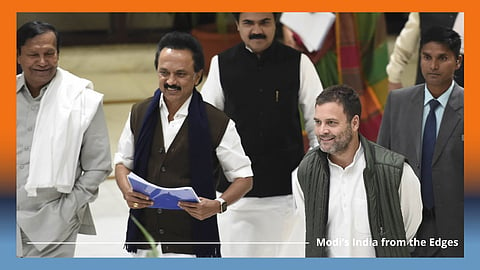Tamil Nadu has led the fight against the BJP and the Modi model
This story is part of ‘Modi’s India from the Edges’, a special Himal series presenting Southasian regional perspectives on Narendra Modi’s decade in power and possible return as prime minister in the 2024 Indian election. To read the series and support Himal’s work on it, click here.
In its 1998 Pachmarhi Declaration, the Indian National Congress wanted a return to single-party rule for India. The declaration was very particular about the party standing on its own and not ceding turf to any partner parties for short-term political gains. Narendra Modi and his Bharatiya Janata Party (BJP) have emulated this idea since they came to power in 2014, undermining their regional partners such as the Shironmani Akali Dal in Punjab, the Shiv Sena in Maharashtra and different factions of the Janata Dal in northern and eastern India. Meanwhile the Congress, moving on from the ethos of Pachmarhi, has become a party espousing federal balance and a decentralised polity as it continues in its role as the main national party in opposition to the ruling BJP. This shift has happened only due to significant political inputs from the Dravida Munnetra Kazhagam (DMK), the ruling party in Tamil Nadu, which has built on the very successful Dravidian model of governance.
The DMK has been the main pillar of the opposition alliance standing against Modi and the BJP in the 2024 Indian general election. It has kept relationships between alliance partners intact by making necessary compromises. More importantly, it has devised strategies to counter the BJP’s formidable electoral machinery. Tamil Nadu itself has been a bulwark against Modi, the BJP and right-wing politics over the past ten years even as this triad has swept much of India – and this has been due to its long history of Dravidian politics, centred around equality, inclusivity and social cohesion.

